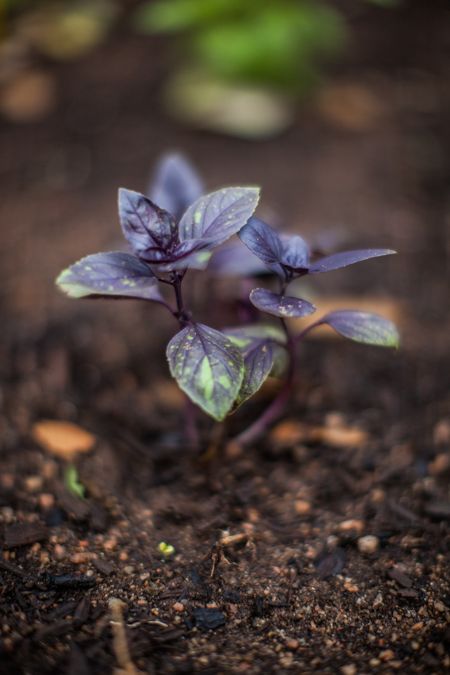It won't be long before we bid adieu to greens--our summers are just too hot for most of these tender leaf crops. Creative cooks and gardeners can compensate though, with a few varieties that withstand high temperatures (Malabar spinach, chard, arugula) and big-leaf, colorful basil! Basil thrives here in Austin—get it well established in the spring, and it will brave our hot summer like a hero, producing tasty leaves to flavor your dips, dishes, and beverages all the while. And it doesn't just tolerate heat, it loves it! Read on for tips for planting now and harvesting all the way up to next year's first freeze.
- If you are a beginner, start with the Genovese variety. This variety produces abundantly and is ideal for a variety of dishes. Once you gain confidence, there are many varieties to choose from, including purple, Asian, dwarf and citrus!
- You can plant basil in-ground, but it is a perfect plant for container gardens, particularly if you are just getting started.
- To plant in a pot we recommend about a one gallon container that drains well, filled with quality potting mix.
- Moisten the mix and add it to the container, leaving an inch of space at the top to make watering easier.
- Plant basil either from seed or transplant onto your pot. To conserve water, top with mulch. If you are growing from seed do this after your seedling has come up.
- Water consistently as basil grows best when it is watered regularly though it is hardy enough to withstand a mild drought.
- Due to its tough nature, it requires little fertilizing once potted in a quality mix. You can fertilize with compost or liquid fish emulsion if you notice a decrease in growth or quality of color.
- You can begin to harvest as soon as you have a plant that has enough leaves that it could spare a few; the larger the plant gets, the more you can harvest from it.
- Pick leaves from the top of the plant to encourage additional bushy growth from the sides and pinch off the flowers as they start coming in.
- Basil in Texas it is considered an annual, meaning it will only grow during the warm season between March-November, so allow your plant to flower when it nears the end of the season so you can collect seeds for the next year.

